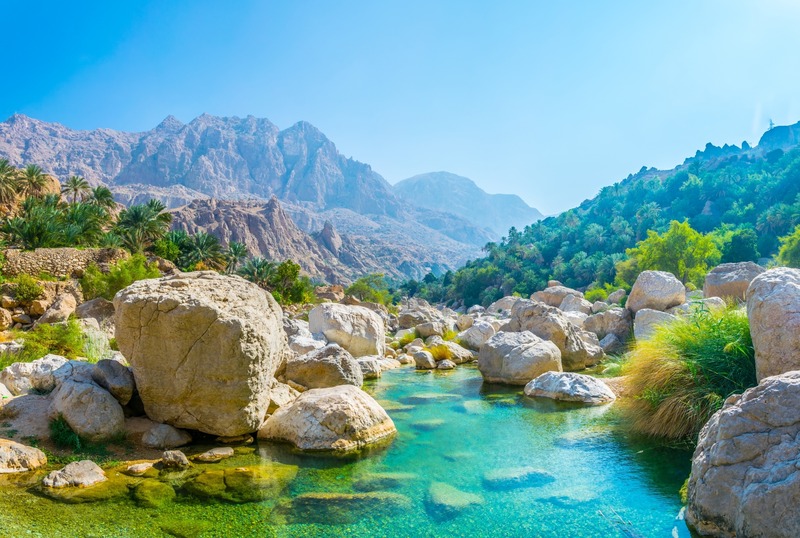
Oman is a remarkable destination for nature and wildlife enthusiasts, offering a blend of thrilling outdoor activities and breathtaking landscapes. From exhilarating hikes and adventurous sandboarding down towering dunes to tranquil nights spent camping under a star-filled sky, the options are endless for those looking to immerse themselves in the natural world.
Turtle-Watching at the Ras Al Jinz Reserve

The Ras Al Jinz Turtle Reserve is a fascinating ecosystem that showcases pristine coastlines, expansive golden deserts, verdant oases, and rugged mountain terrains. This reserve serves as a critical nesting ground for four different species of turtles: the endangered Green Turtle, the Olive Ridley Turtle, the Loggerhead Turtle, and the critically endangered Hawksbill Turtle.
As a premier eco-tourism site in Oman, it provides an extraordinary opportunity for visitors to witness the nesting process of these ancient creatures without causing any disturbance. Additionally, the reserve features an interactive museum and research facilities where guests can learn more about turtle biology and conservation efforts, enhancing their understanding of these remarkable marine reptiles.
The Unique Nature and Wildlife of the Desert

Jebel Samhan, the highest mountain in the Dhofar region, is home to Oman’s Leopard Sanctuary, accessible only with special permission. The journey to this sanctuary is a visual delight, as the road winds through areas populated with majestic baobab, acacia, and frankincense trees, alongside traditional Bedouin settlements that offer a glimpse into the region's rich cultural heritage.
This nature reserve plays a significant role in protecting some of the last remaining wild Arabian leopards, along with other rare species such as the Arabian wolf and striped hyena. Wildlife enthusiasts will also have the chance to spot gazelles, foxes, and Nubian goats in their natural habitats.
For an unforgettable experience, visitors can set up camp on the mountain plateau, enjoying breathtaking views and the chance to cool off at the Tawi Ateer Sinkhole.
Wadi Bani Khalid
Wadi Bani Khalid is celebrated as Oman’s largest and most beautiful oasis, featuring serene emerald pools surrounded by lush palm trees, all framed by dramatic desert cliffs and boulders. The area has been thoughtfully developed to enhance visitor experiences, boasting several bridges, seating areas, and a restaurant that harmoniously blend with the natural beauty of the oasis.
Located a three-hour drive from Muscat and two hours from Sur, this scenic canyon is a worthwhile destination for those seeking tranquility and picturesque landscapes.
Sunrise Desert Yoga

Start your day with a refreshing sunrise yoga session on the soft sands of the desert. This unique experience allows participants to reconnect with nature and embrace a fresh beginning, all while enjoying the peace and beauty of the desert landscape as the sun rises.
Visit & Eat in a Bedouin House in the Desert

For those seeking an authentic cultural experience, staying at a traditional desert camp run by a local Bedouin family in Sharqiya Sands, also known as Wahiba Sands, offers a unique opportunity. Guests can enjoy warm Bedouin hospitality, with options to sleep under the stars or in cozy huts.
Meals are served at an on-site restaurant, and various desert activities, including camel treks, are available. The camp is proud of its environmentally friendly practices and was awarded the Oman Green Award in 2013, highlighting its commitment to sustainable tourism.
Dhow Cruise Along the Coast South from Muscat

Setting sail on a traditional dhow along the southern coast from Muscat provides a stunning backdrop of majestic mountains. This area is rich in marine life, and it’s common for playful dolphins to swim alongside the boats, with seasonal sightings of whales adding to the excitement. A variety of excursion options are available, from short trips to overnight adventures, ensuring that both children and adults can enjoy this serene experience away from the urban hustle.
Wadi Al Shab Hike

Wadi Al Shab is one of Oman’s most popular gorges, known for its spectacular waterfall nestled within a cave. A short boat ride across a narrow ravine leads to this lush paradise, surrounded by towering cliffs. Visitors may spot Omani women in traditional dress gathering herbs from the cliffs, adding to the cultural richness of the area.
The hike to the caves requires about an hour of trekking across varied mountainous terrain, with opportunities for refreshing swims in natural emerald pools along the way. The exploration includes several caves, culminating in the breathtaking waterfall.
Wadi Tiwi

Wadi Tiwi, named after the nearby village, is a serene oasis boasting lush plantations and farms, alongside a stunning natural pool bordered by date and banana trees, complemented by a picturesque waterfall. This deep, narrow gorge, carved through the mountains, runs between towering cliffs and descends to the sea.
Located in the Al Sharqiyah region, adjacent to the more famous Wadi Shab, Wadi Tiwi offers a more secluded experience, with a narrow road winding through traditional villages leading to its entrance.
Balcony Walk

Perched on Jebel Shams, Oman’s highest mountain often referred to as the Grand Canyon, the Balcony Walk is a well-marked trail that follows the canyon's rim. This four-hour hike showcases some of the most breathtaking views in Oman, passing through abandoned villages and hidden waterfalls that provide fantastic photo opportunities.
The trail is moderately challenging but can be easily navigated in trainers, as it doesn’t require significant climbing.
Misfat Al Abriyeen

Nestled in the foothills, the village of Misfat Al Abriyeen is renowned for its beautiful agricultural terraces, charming alleys, and ancient mud houses topped with palm frond roofs, all built on solid rock foundations. Often called a "mountain oasis," the village features stunning local gardens nourished by an intricate falaj irrigation system carved into the mountain.
Many villagers rely on these terraces for their livelihood, cultivating a variety of fruits, including bananas, pomegranates, papayas, mangoes, citrus fruits, and dates, making it a vibrant hub of agricultural activity.
Oman is a remarkable destination for nature and wildlife lovers, offering diverse experiences from turtle-watching at Ras Al Jinz Reserve to the serene beauty of Wadi Bani Khalid.
With opportunities for adventure, such as hiking and desert yoga, alongside authentic Bedouin hospitality, visitors can fully immerse themselves in the country's unique landscapes and rich culture. Oman invites all to explore its natural wonders and create lasting memories.


.jpeg)











.jpg)








.jpg)




.jpeg)
























.jpg)
